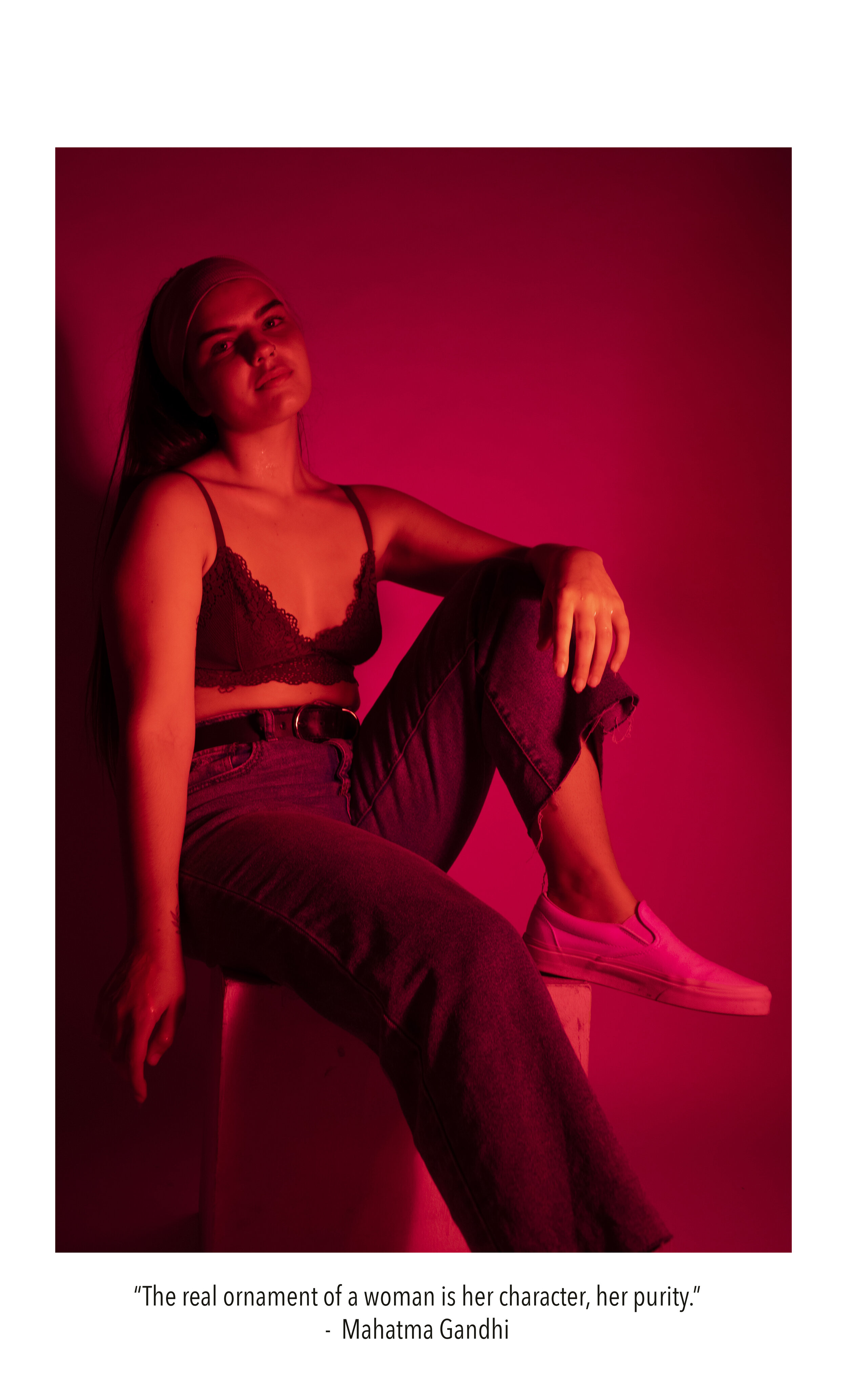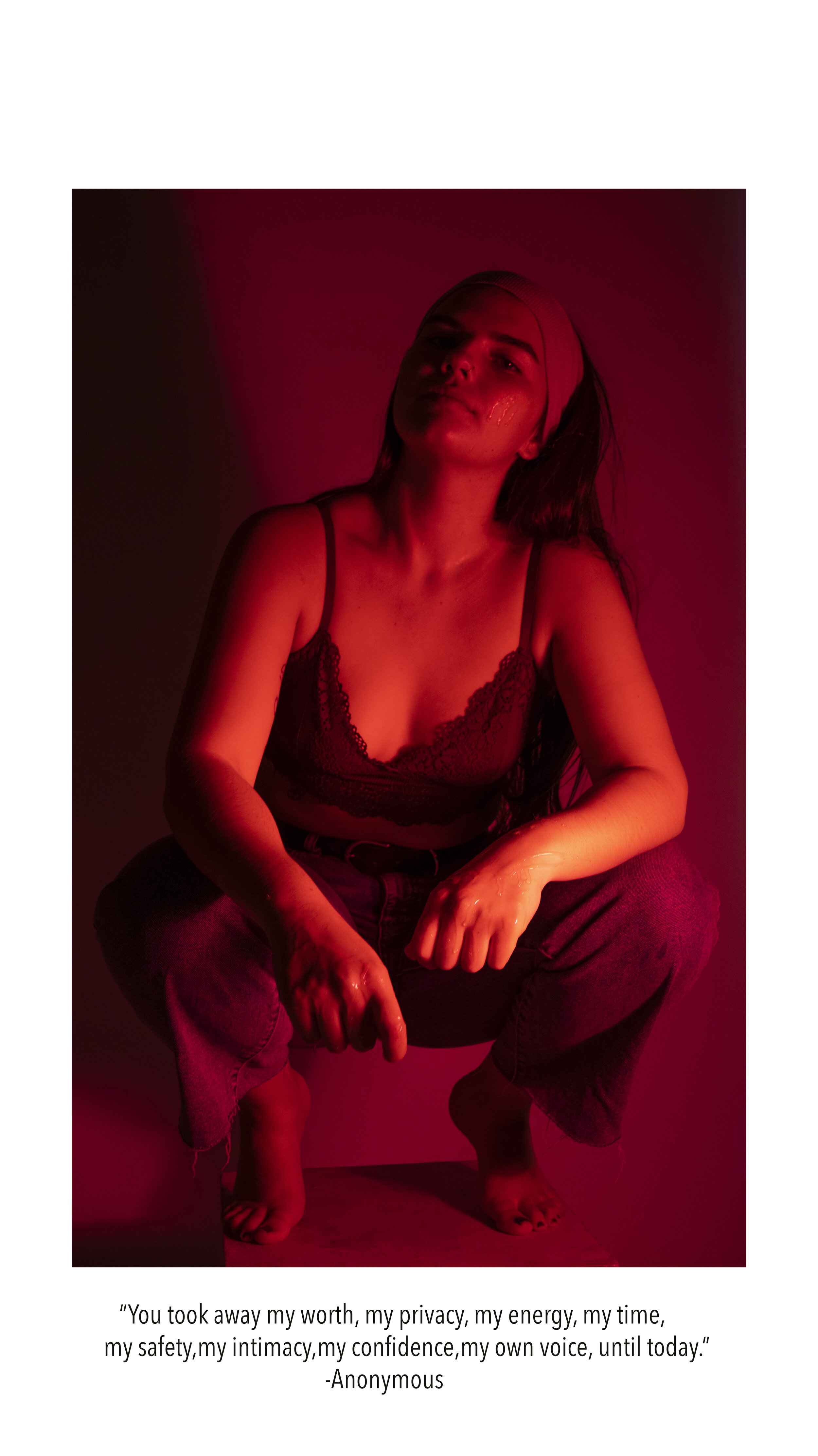Feminine Expectations: A discussion about intersectionality and fine art with photographer Sierra Frost
by Meria Ivy
Sierra Frost
Photo by Meria Ivy
On Tuesday, photographer Sierra Frost wandered into the lighting studio with a bouncy shuffle tempered only by the volume of work she had brought for me to look at. She started laying out large-format images of her most recent project, as well as a binder of previous work she’s proud of, on the honey-stained table. She looked casual and relaxed in her self-proclaimed “skater boy outfit” as she settled in.
Frost is a junior political science major who is working towards a B.F.A. in photography at the University of Iowa. She is a professional photographer who has done work with “Humanize My Hoodie” and the University of Iowa’s Student Life Marketing and Design team. In the future, she intends to pursue further photography education or begin a career in political photography.
She began to explain the work she’s most proud of and what drives her.
She’s most driven by the Smithsonian survey that reported 85% of artists on display in major US museums are white. Of those artists, 87% are men. She says that society has put women in a box, and it’s time for women to step into those spaces. That’s why she challenges herself and hopes that other women, particularly women of color, will push themselves to make provocative art outside the scope of historical precedent.
According to Frost, the project she’s most proud of is a series about the Brett Kavanaugh hearings. It helped her realize her purpose, and how she can use art to facilitate discourse. The images were inspired by the “Time’s Up” and “Me Too” movements. In them, she depicts a young woman bathed in red light and honey. Every image incorporates honey, as a critique of the term often used by men when talking to a woman.
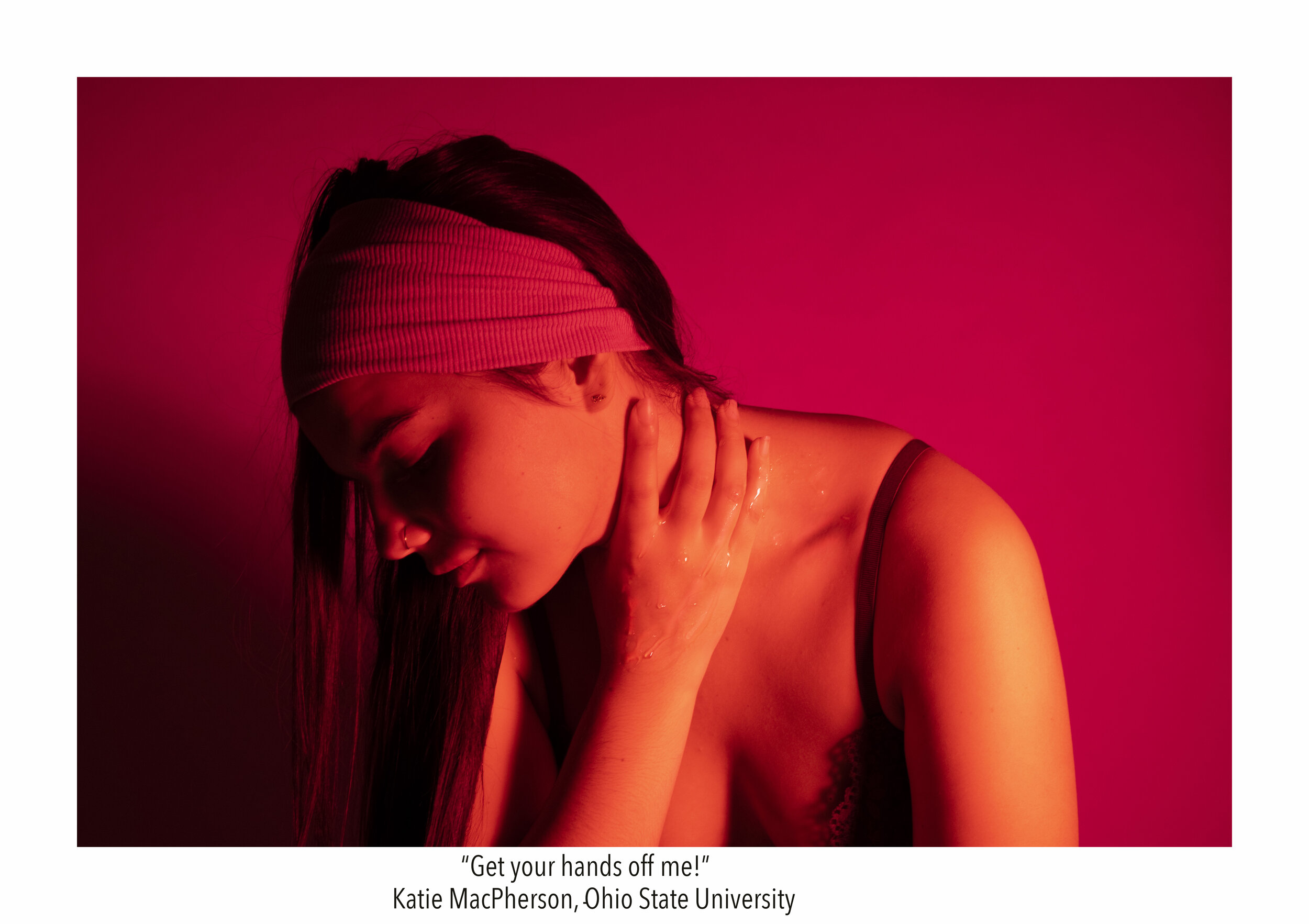
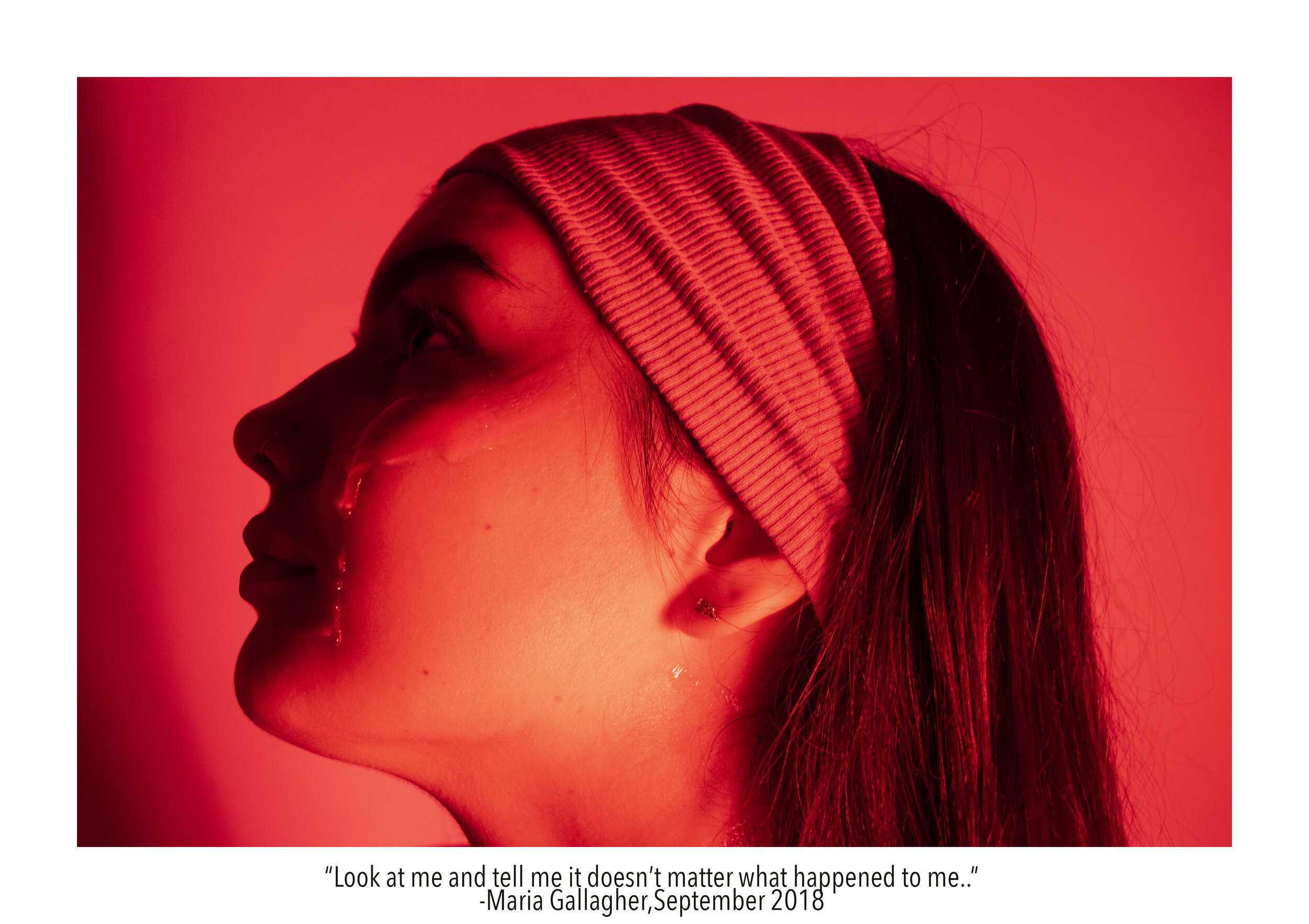
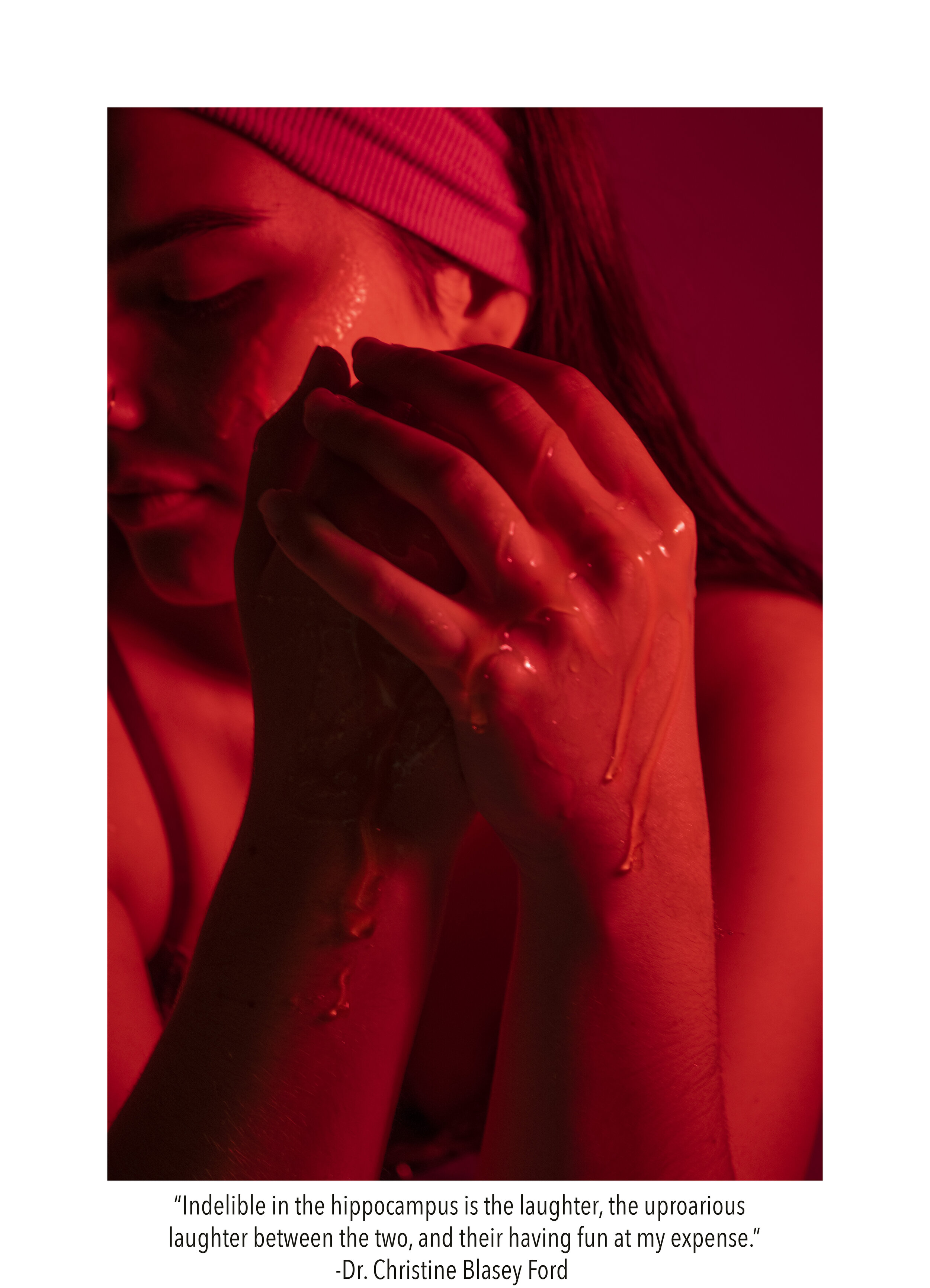
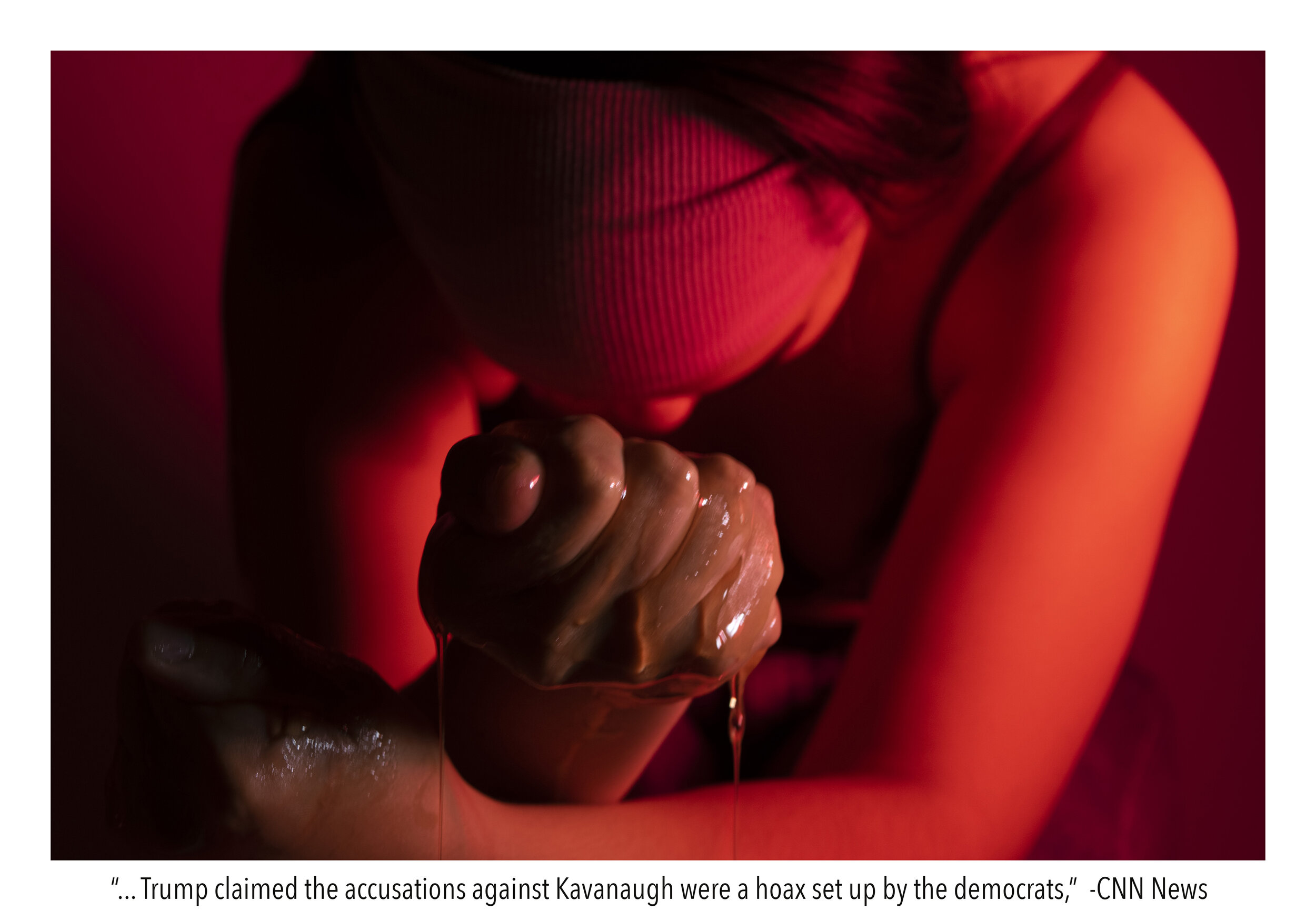
“That was the first project where no one had anything to say. They were too uncomfortable. That’s what my work is about, making people uncomfortable,” said Frost. She has carried that experience with her as she embarked on this new project. She launched into the tale of how her most recent project came to be, and how it was a cathartic and reflective experience for her.
“It feels self-centered to say it’s all about me, but it is. I always integrate my past, because it still heavily influences me,” Frost said. The project is a series of delicate and feminine images with an underlying creepiness. They came to be after ending a 3-year relationship with her boyfriend.
“We went through high school, two proms, and college together, and when it ended, I started to wonder why I felt like I had to subscribe to more feminine ideals when I was with him,” Frost said.
Her prom dress is the focal point from which all other symbolism in the series emanates. She hates dresses going as far as to dub them “stupid” and said shredding her flouncy pink prom dress symbolized a release from her relationship and the end of her willingness to subscribe to societal expectations of femininity.
The work utilizes a lot of repetition, seen throughout the use of pink and silk. Frost explained that the fragments of hanging cloth seen in the photos represents vaginas and her personal experience with womanhood.
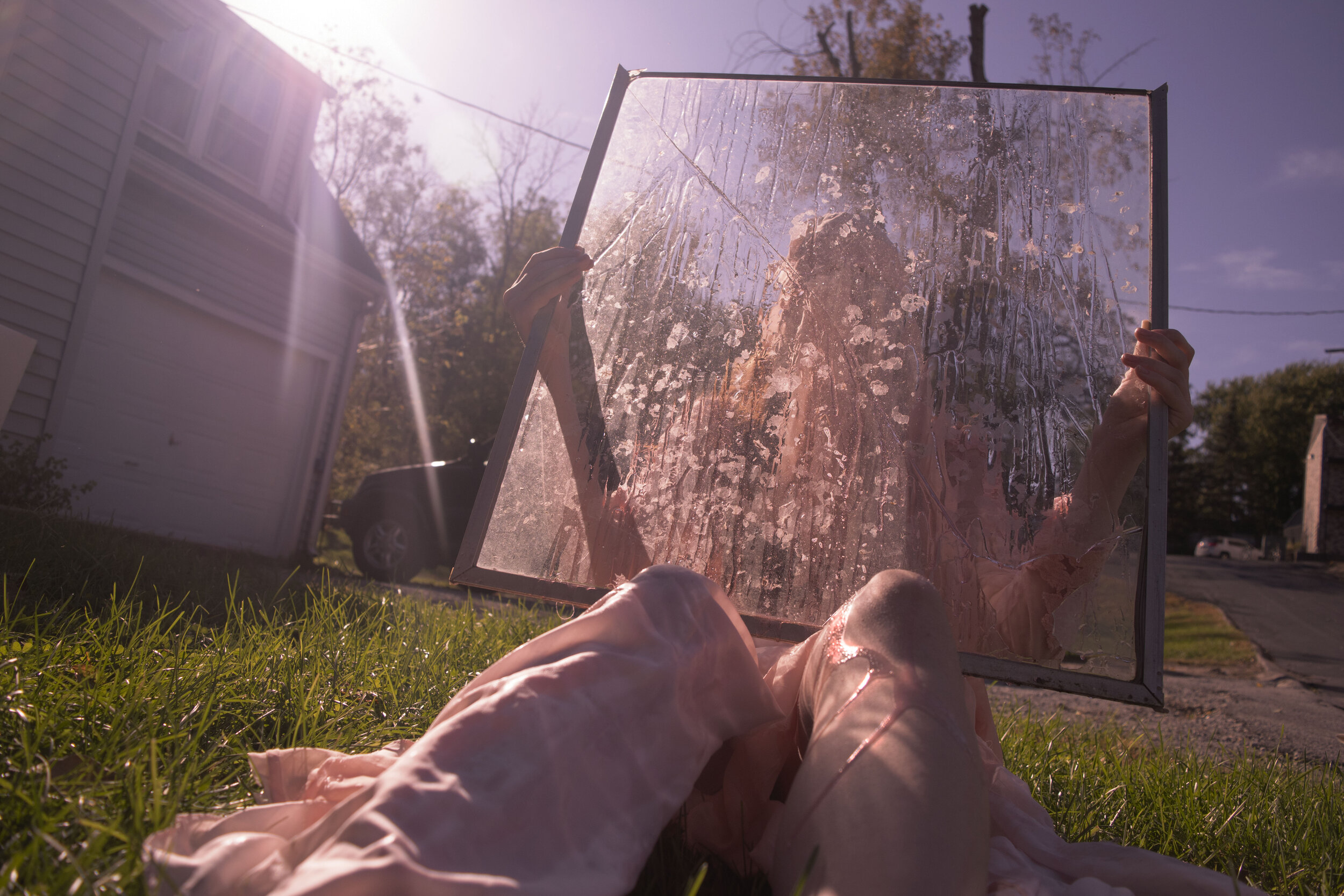
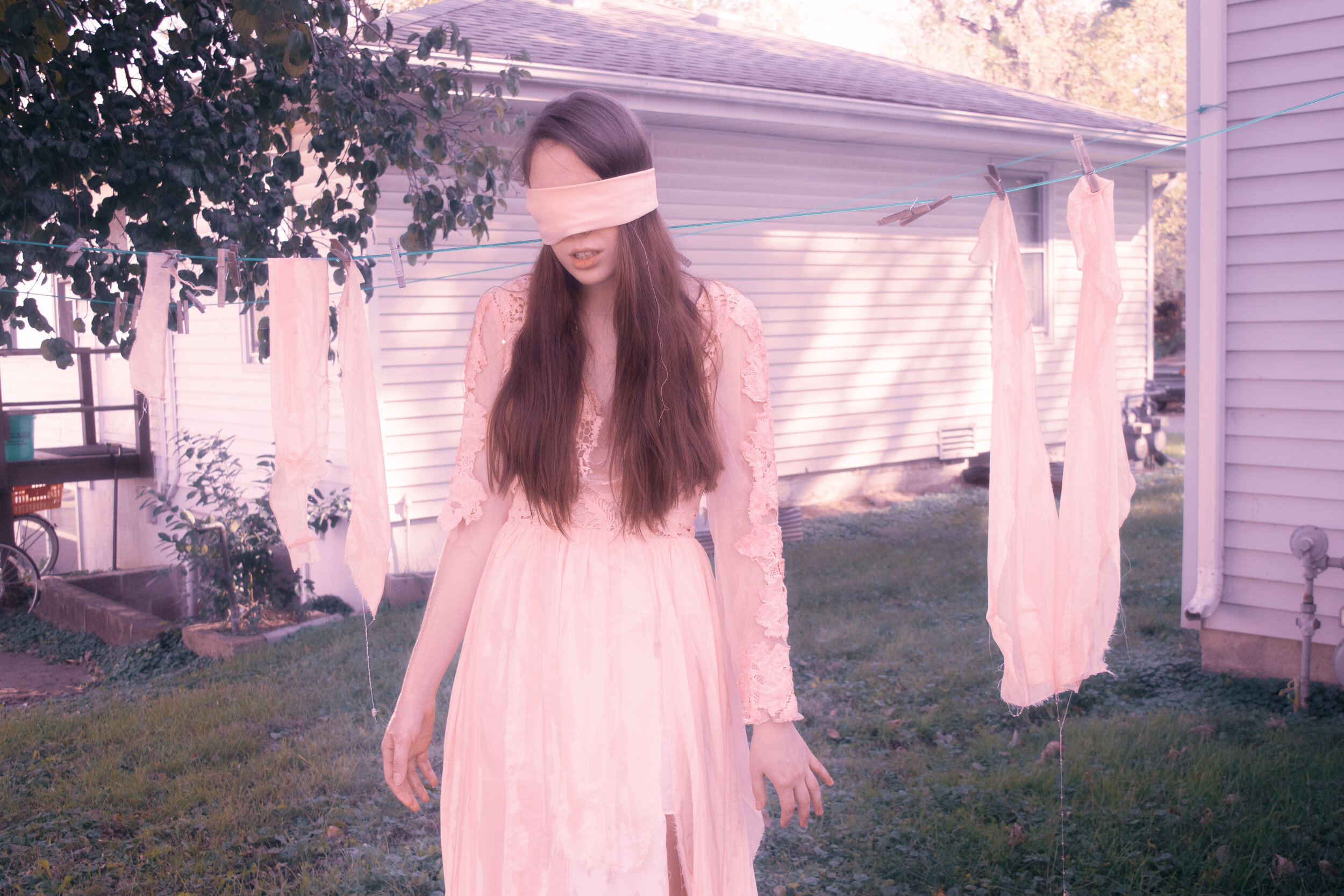
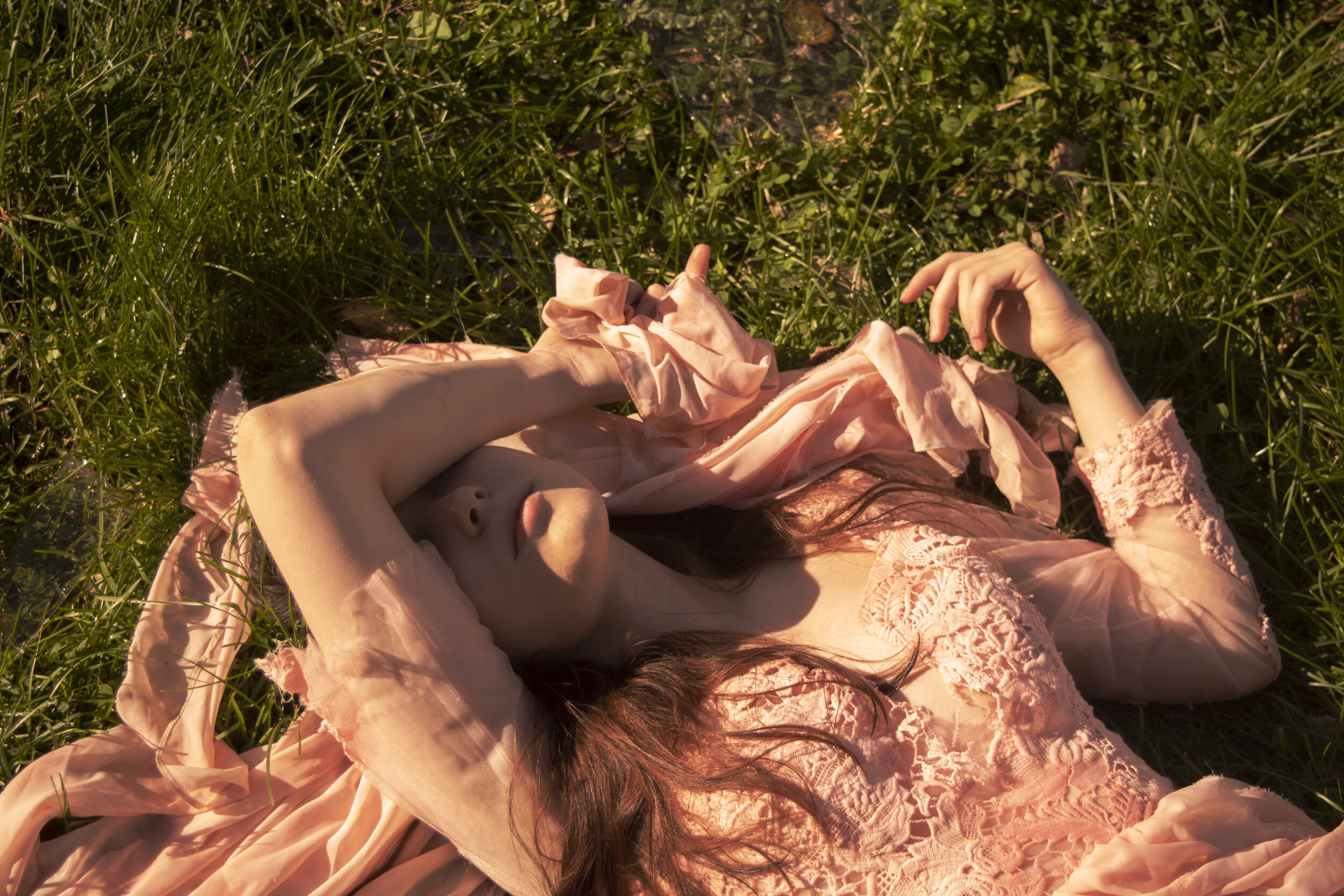
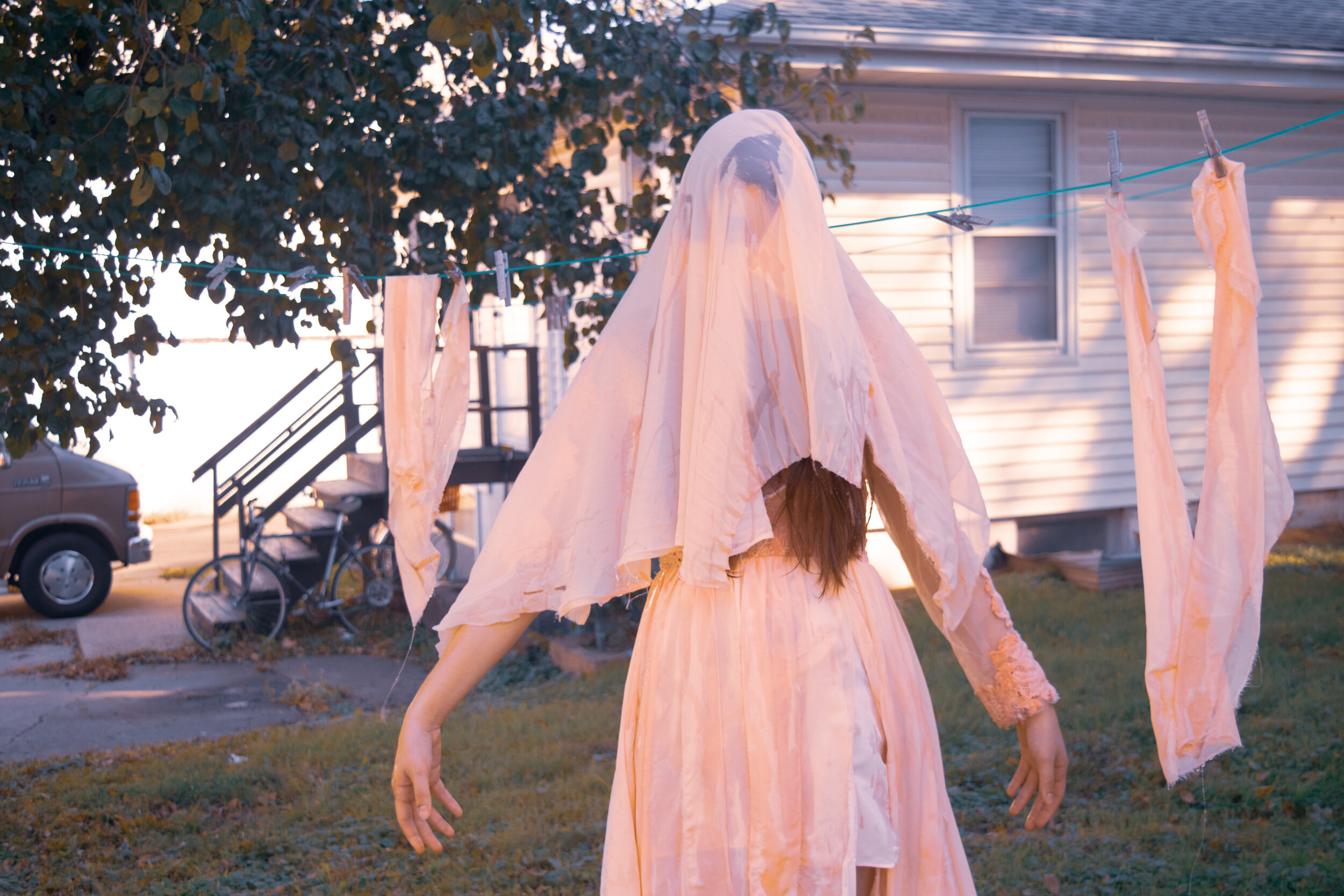
The excessive use of draped fabric borders on a satirical critique of our society’s focus on the sexualized female form and definition of womanhood. Frost has used silk in all of her recent work, as she has continued to explore her history of trying to define and present her identity while being raised by a single white father. Her expectations were derived from pop culture and now she’s using her art to redefine what being a woman of color means for herself.
Her work also explores her history coming from a broken home and her journey to understanding the duality of her multicultural identity.
The glass held by the blindfolded model signifies her broken home. She used a sheet of cracked glass found outside her home and stepped on it until it was completely fractured and felt representative of her family dynamic.
When she was born, her mom left her dad’s name off her birth certificate, and when he was contacted to relinquish his parental rights, he was left shocked that he had a child. He took steps to get Frost out of foster care and adopt her. Through this turn of events she was able to grow up with her “bio dad,” but she was left without a side of her family that could shed light on the duality of her genetic makeup and help her find her place within black culture.
Growing up with her white dad and without much exposure to the black side of her family or black culture, she was left trying to fill in what that meant for her identity, and where she fit in to everything. She laments that her only exposure to black culture as a child came from a Kanye album. Although, she digresses, “I was a pretty fly kid.”
She spent some time in the Young, Gifted, and Black LLC program offered through the University of Iowa residence halls and felt that it was good for her to immerse herself in the culture and get a better understanding of the black diaspora, but she still found it difficult to find where she fit within the community.
“I felt sad. I don’t go to slam. I’m not woke enough.” said Frost while explaining some of the differences that made her feel like an outsider. “One day I was just thinking do I have any black friends? There’s like a barrier because you have to prove that you’re black enough, and if you can’t, you just have to live with the feeling that you’re missing out on something.”
She quickly rapped a verse of Logic’s song “Everybody” for me to explain how her race has been difficult for her to rectify in her life and her art.
In my blood is the slave and the master
It's like the devil playin' spades with the pastor
But he was born with the white privilege!
Man what the fuck is that?
Sierra Frost
Photo by Meria Ivy
Frost said it can be hard to find your place, when you feel like you’re not really a part of the community, and while you’re experiencing white guilt. She explains that when you experience a lot of privilege, it can feel like it’s not your place to claim your blackness. In her project, she utilized a white model to symbolize the way she feels blocked from learning more about her blackness, because of her complexion and having people question if she was really a person of color.
She references how she passes the brown paper bag test, a colorist and antiquated method of determining if a black person would be allowed admission to certain venues and organizations. Prejudice towards people with deeper skin tones persists today, and she believes the privilege she has experienced makes it unfair of her to claim much of her blackness, while systematic oppression still heavily impacts others.
“I’m bad at all other types of art, but I’m good at photography,” said Frost while explaining her dedication to this particular medium. She likes to mix materials to create a quirky and unique aesthetic, to make something she’s never seen done before. This allows her to delve into serious topics in a creative and manageable way.
“I’m not like other artists,” she joked.
She uses elements of intermedia and collage in conjunction with her photography to create compelling narrative pieces surrounding her personal history and the current social and political climate in the U.S. Frost felt that with this series and her other projects she doesn’t realize what she needs to express until the idea comes to fruition. “I make the art, so I can find the meaning.”



